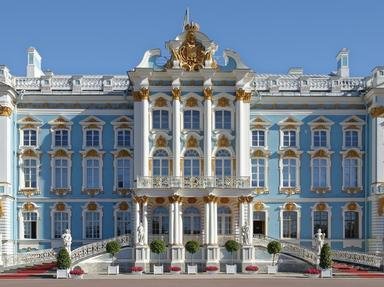Quiz Answer Key and Fun Facts
1. 'Waltzing In'
The first Romanov Tsar of Russia was elected by a national assembly in 1613 and accepted a very difficult job as Russia had just spent 15 years in the grip of the 'Time of Troubles'. What was the name of this ruler, who was only sixteen years of age when his reign commenced?
2. 'It Takes Two to Tango'
Which Russian Tsar, also known as 'the Great', was co-ruler with his elder half-brother for the first 14 years of his reign?
3. 'Dancing the Polka'
The first female leader of Russia took the throne when she succeeded her husband in 1725. Her original name was Marta Helena Skowronska, but under what name did she rule?
4. 'Having a Ball'
The teenage Tsar Peter II was known for his love of hunting and feasting and his dislike for dealing with matters of state. Which infectious disease, declared eradicated by the World Health Organisation in 1979, caused his death in 1730?
5. 'Ballet Beginnings'
In 1738 the official residence of the Russian royal family became the first home of the Imperial Theatre School, which was set up with the aim of producing dancers to form a Russian ballet company. What is the name of this building, located in St Petersburg, which saw the beginning of ballet in Russia?
6. 'A Twist in the Succession'
Tsar Ivan VI's reign lasted for only thirteen months between October 1740 and December 1741. However, he died in July 1764 at the age of 23. Where did he spend the majority of his life?
7. 'A Swing in Power'
Catherine II, or Catherine the Great, ruled Russia from 1762 to 1796. What was her relationship to her predecessor, Tsar Peter III?
8. 'A Royal Line Dance'
Queen Victoria of the United Kingdom was named after the Tsar of Russia at the time of her birth in 1819. What was the name of this Tsar who was also one of the godfathers of the 'grandmother of Europe'?
9. 'Anyone for a Charleston?'
In 1867, Tsar Alexander II eased the Russian government's financial difficulties by selling approximately 1.5 million square kilometres of Russian territory to which other country?
10. 'Left in Limbo'
The Romanov dynasty's rule over Russia ended in 1917 when Tsar Nicholas II abdicated following which aptly named revolution?
Source: Author
Fifiona81
This quiz was reviewed by FunTrivia editor
bloomsby before going online.
Any errors found in FunTrivia content are routinely corrected through our feedback system.

